Top 10 Things to Do in Vietnam
Vietnam has still a way to go before being a world-renowned destination. However, it still has its share of activities. These range from stunning Ha Long Bay to beautifully quaint Hoi An to Ho Chi Minh’s mausoleum. The Cu Chi tunnels represent the sheer grit and ‘can-do’ attitude of the Vietnamese while a visit to the War Remnants Museum brings home the horrible reality of war. On the more positive side, the marvelous Hue Monuments, along with the My Son Sanctuary will awaken your spiritual side. Explore the best of Vietnam.
1. Ha Long Bay
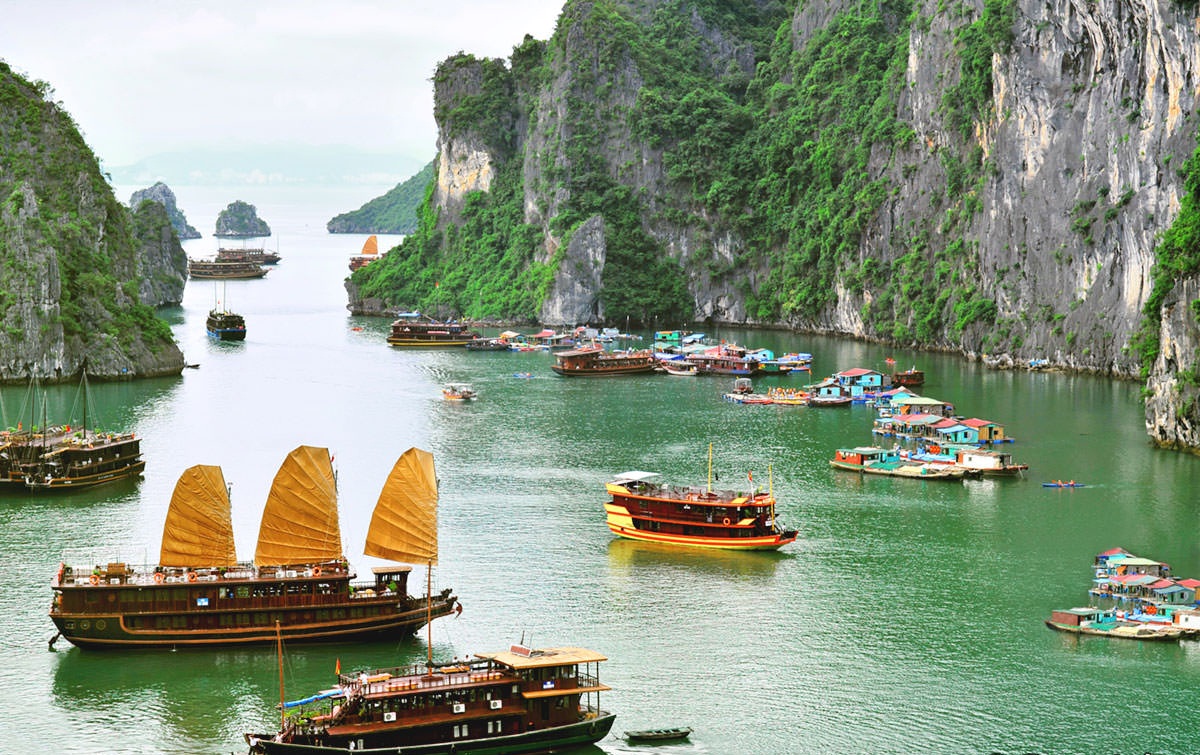 |
Halong Bay is a beautiful natural wonder in northern Vietnam near the Chinese border. The Bay is dotted with 1,600 limestone islands and islets and covers an area of over 1,500 sqkm. This extraordinary area was declared a UNESCO World Heritage Site in 1994. For many tourists, this place is like something right out of a movie. The fact is that Halong Bay features a wide range of biodiversity, while the surrealistic scenery has indeed featured in endless movies. |
The best way to get to Halong City is by car, minibus or bus from Hanoi which is only 170km away. If budget is not a problem, an hour-long helicopter transfer is also available.
2. Imperial Citadel of Thang Long in Hanoi
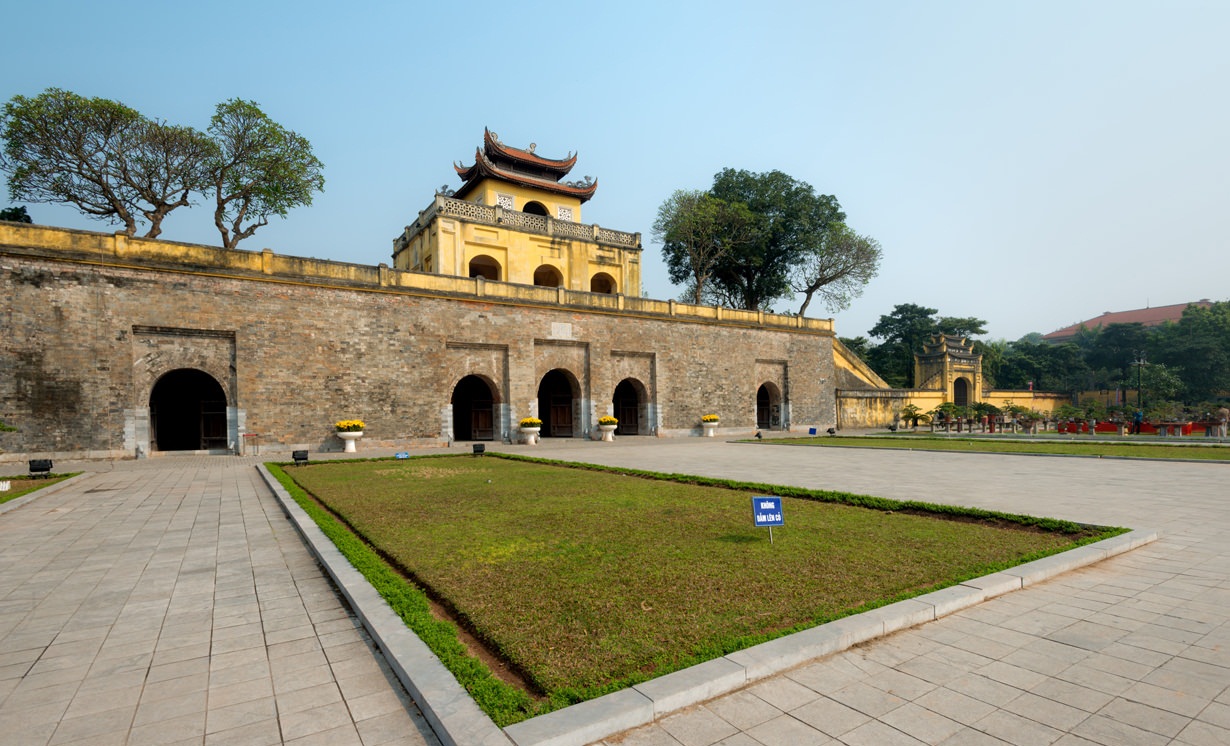 |
The large central sector of the Imperial Citadel of Thang Long in Hanoi was named a UNESCO World Heritage Site just in time for Hanoi’s millennial anniversary in 2010.
The ancient site was the political centre of the country for 13 consecutive centuries and served as the capital of Vietnam for eight centuries.
The central sector of the imperial citadel includes relics in Hanoi Citadels and an interesting archaeological area at 18 Hoang Dieu Street. Excavation work took place from 2002 to 2004 at the Thang Long Royal Citadel site and as a result many artifacts and items from the 6th to the 20th century belonging to the Ly, Nguyen, Tran, Le eras were found.
|
Foundations of old palaces, relics, ancient roads, ponds and wells were discovered and as a result the famous Hanoi Flag Tower on Dien Bien Phu Street in Ba Dinh District, a renovated old stone fortress, is popular with visitors. On top of these discoveries, archaeologists also found bronze coins, ceramics and pottery from China and many places in Asia, all of which demonstrate a close trading relationship in the area. Visitors should head for the display room that features interesting excavated items as well as mockups of the citadel itself.
Location: Next to Ba Dinh Square, opposite the Ho Chi Minh mausoleum and also near many important political buildings including the Vietnamese Presidential Palace.
3. Hoi An Old Town
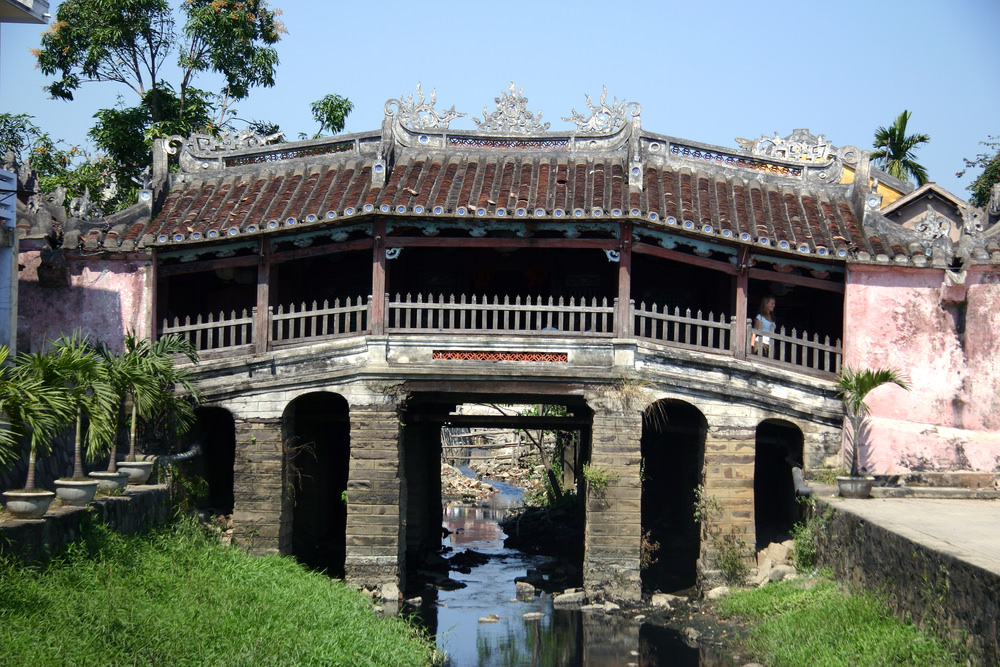 |
Once a major Southeast Asian trading post in the 16th and 17th centuries, the seaside town Hoi An is basically a living museum featuring a unique mixture of East and West in the form of its old-town architecture.
Among the heritage architecture stand Chinese temples, a Japanese-designed bridge, pagodas, wooden shop-houses, French- colonial houses and old canals. Though large-scale trading had long moved elsewhere Hoi An has been successful in preserving and restoring its charming roots and was declared a UNESCO World Heritage site in December 1999.
|
Hoi An Riverside is the best place to be at night as the area is lit by quaint and old-fashioned lanterns, making it an atmospheric and beautiful spot. For those who love sea, sun and sand, Hoi An offers two lovely beaches five kilometres away from the town centre – a sort of holiday within a holiday.
Hoi An is known for its great food, fun shopping, skilled tailors, friendly people and cosy atmosphere – all key characteristics that draw people to this picturesque town.
Two great things about Hoi An’s Old Town are that it is small enough to get around in on foot and the traffic is nowhere near as heavy as in bigger cities. Some of the streets only allow bike and motorbike traffic and some are pedestrian only. These factors make Hoi An even more inviting for most travelers to Vietnam, especially those who have passed through frenetic Ho Chi Minh City (aka Saigon) or Hanoi.
Many buildings in the Old Town were constructed over a century ago and feature strong Chinese influences stemming from merchants from Guangzhou, Fujian, Chiu Chow and Hainan. Some of the wooden signboards bearing the company names are carved and gilded in Chinese characters, reflecting the strong presence of the Chinese in Hoi An ever since its prosperous times.
4. Ho Chi Minh Mausoleum in Hanoi
 |
Ho Chi Minh Mausoleum in Ba Dinh Square is one of the most visited attractions in Hanoi. It is the final resting place of Ho Chi Minh, the most iconic and popular leader of Vietnam, known to his people as ‘Uncle Ho’. His body is preserved here in a glass case at the Ho Chi Minh Mausoleum in central Hanoi (albeit against his wishes).
For visitors, a trip to Uncle Ho’s final resting place can be an extraordinary experience as it is not just an average attraction; it’s a part of a unique history.
|
Started in 1973, the construction of the mausoleum was modeled on Lenin”s mausoleum in Russia and was first open to the public in 1975. The granite building meant a great deal for many locals as it ensures that their beloved leader ‘lives on forever’.
Security is tight and visitors should dress with respect (no shorts, sleeveless shirts and miniskirts) and everyone has to deposit their bags and cameras before getting in. Visitors are not allowed to stop and hold the constant queue up as the place is constantly busy. Uncle Ho’s remains are sent yearly to Russia for maintenance therefore the mausoleum is closed usually from October onwards. It’s best to recheck with your hotel tour desk before visiting. Admission is free but donations are accepted.
Opening Hours: Tuesday to Thursday and weekends from 08:00 – 11:00. Closed on Monday and Friday
Location: At Ba Dinh Square in Hanoi city centre
5. Cu Chi Tunnels
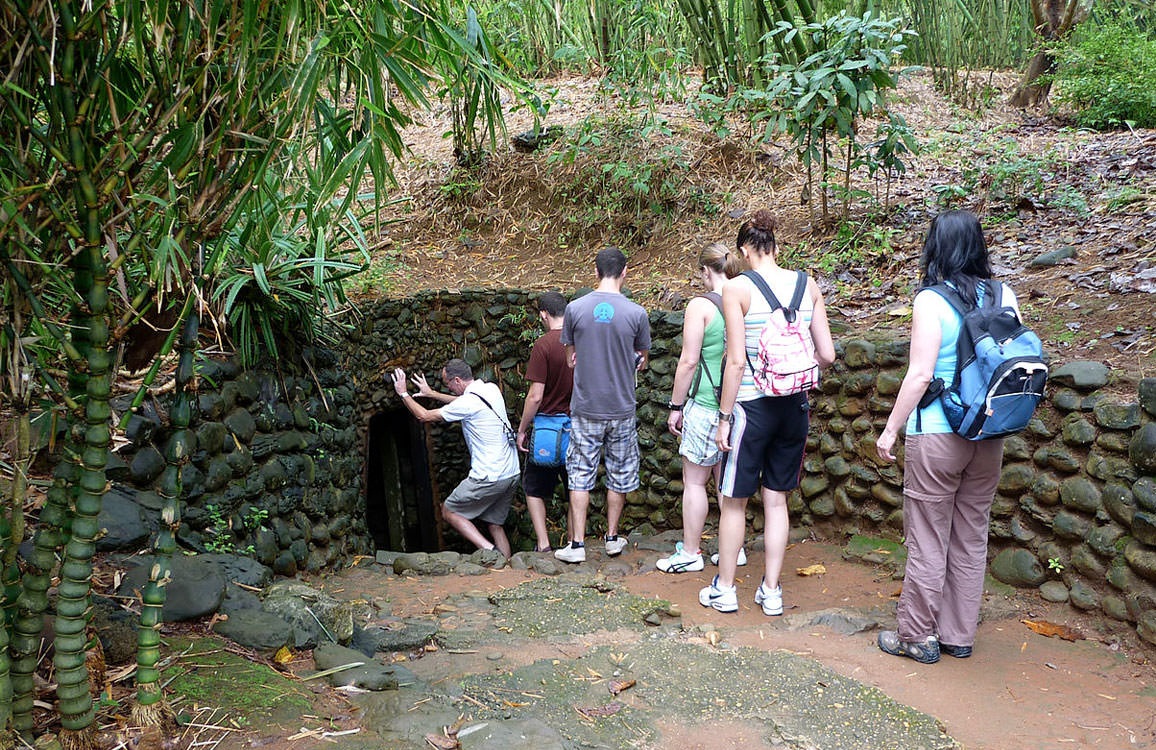 |
Extremely popular with history buffs and first-time visitors to Ho Chi Minh City, the Cu Chi Tunnels are part of a massive war museum that offers a sneak-peek at the underground life of Viet Cong-era soldiers. Built in 1948 when the Viet Cong were at war with the French, it comprises more than 120km of underground tunnels with several trapdoors, living areas, kitchens, storage facilities, armoury, hospitals, and command centres.
|
The Chu Chi Tunnels were also utilised and expanded during the American War, incorporating effective air filtration systems to help Vietnamese soldiers survive the Cu Chi carpet-bombing by the Americans. As they were built so deep underground, military tanks could pass overhead without causing any damage to the tunnels.
Today, it is one of Ho Chi Minh’s most iconic attractions where visitors can enjoy activities such as following the claustrophobia-inducing routes of the underground army, firing an M16 assault rifle, as well sampling meals that the underground soldiers had to live with years ago. The tunnels have been coated with cement and widened so it is not quite the harrowing experience it would have been all those years ago, plus there are emergency exit points every ten metres for safety. Still, during the 100 metres of tunnel you get a sense of what it would have been like during the war.
Prior to entering the underground tunnels, visitors are presented with a short film of the Chu Chi Tunnels so that they have an understanding of how the tunnel system actually works. There is also a shooting range on site. Those who want to fire an M16 rifle are required to pay VND 35,000 per bullet with a minimum of 10 bullets.
The Cu Chi Tunnels are a 40-minute drive from Ho Chi Minh City and there are numerous tour operators that can arrange for a half-day excursion for about VND 825,000 onwards. Do note that the crawl through the underground tunnels may not be suitable for visitors with respiratory difficulties.
6. My Son Sanctuary in Hoi An
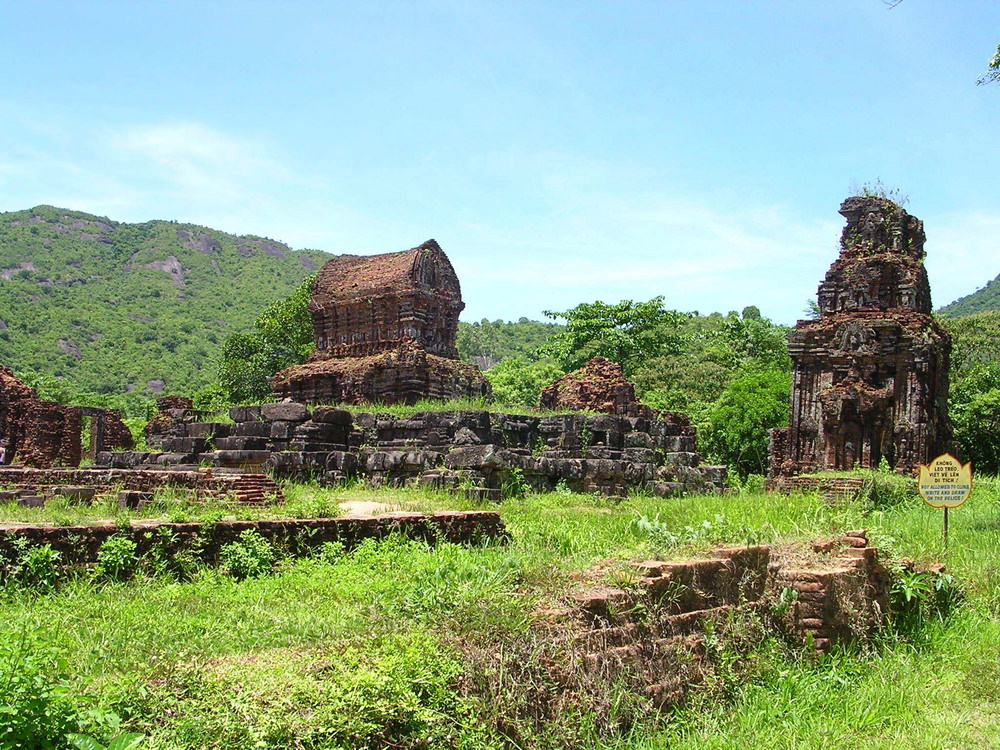 |
My Son Hindu Sanctuary, a UNESCO World Heritage Site, is a great sample of the ancient Champa civilization located in the southern part of Vietnam. It was an independent state from around the 2nd to the 17th century, at which time it was occupied by Vietnam.
The impressive Hindu-themed ruins feature many beautiful stone sculptures, temples and towers in tropical jungle surroundings.
|
My Son was also a political centre and a royal burial ground and the complex consists of more than 70 structures devoted to Hindu gods and goddesses and the most noticeable one, Shiva, was considered the protector of the Champa’s kings. Their skilful use of red bricks and sandstone is remarkable.
Like many historic sites around the world, My Son was destroyed by time and wars and after lying neglected for a long time it was rediscovered and renovated by the French in 1898. Sadly the most recent war did great damage to the complex as the Americans bombed this area knowing that the Viet Cong used it as a hiding place, mistakenly thinking that the enemy would not touch a holy site.
However, the majority of the central complex managed to survive the bombs and parts of the ruins have now been rebuilt. Overall, this Hindu sanctuary reminds visitors of other similar sites in Southeast Asia including the great Angkor Wat in Cambodia. A must-visit for those who appreciate history.
Opening Hours: All year round. The best time to visit is early in the morning before it gets too hot and when it is not too busy
Location: In a small valley in Duy Tan Commune, Duy Xuyen District of Quang Nam Province (about 70km southwest of Danang and 40km from Hoi An)
7. Hue Imperial City
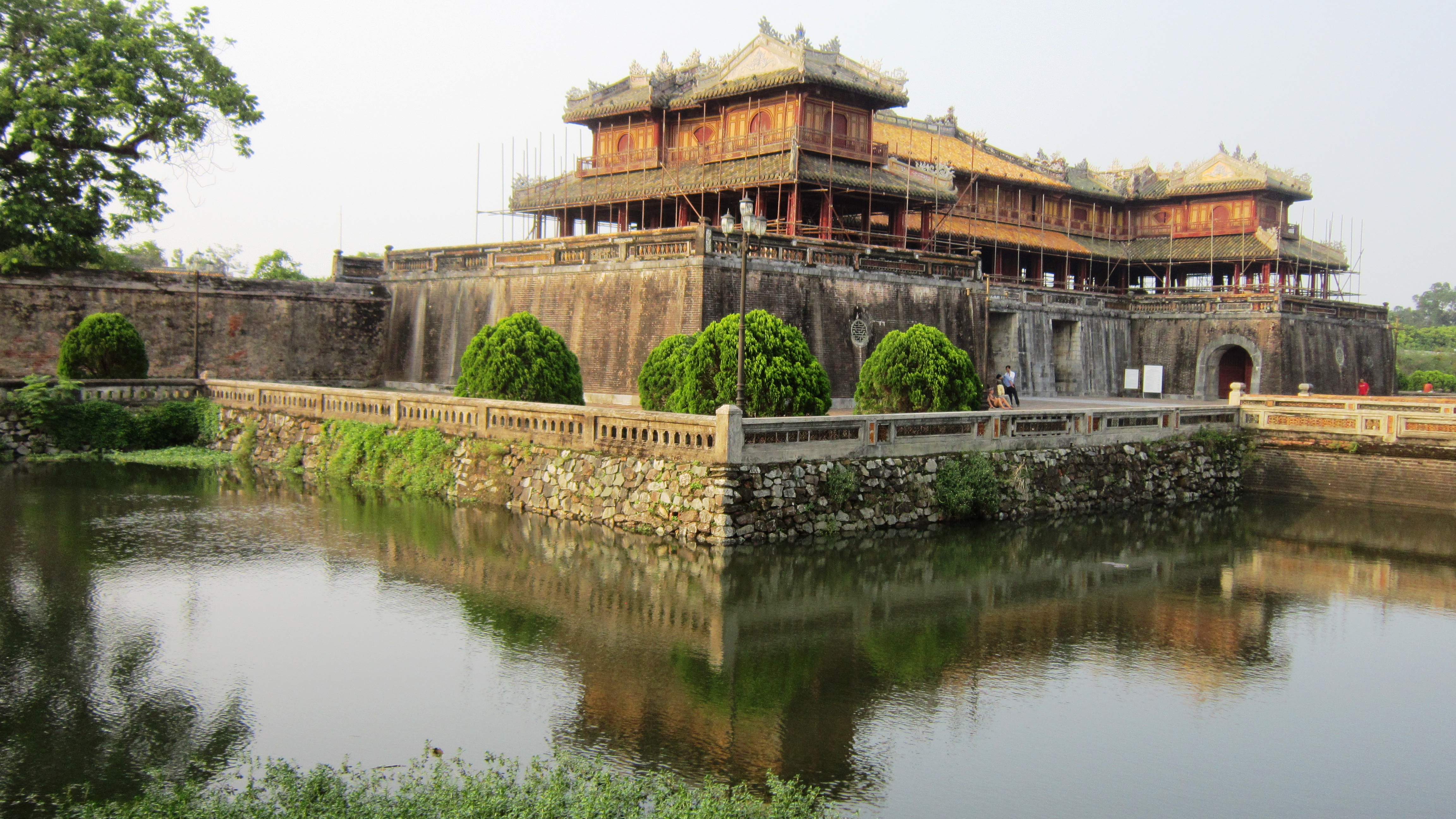 |
The Complex of Hue Monuments is a UNESCO World Heritage Site and is located in the city of Hue in central Vietnam. Hue was founded as the Vietnam capital city by Gia Long, the first king of the Nguyen Dynasty in 1802. It held this position for nine Nguyen dynasties until 1945.
|
Hue, located on the banks of the Huong River, (aka the Perfume River) is about three hours north of Da Nang. Among the most impressive monuments in this former grand imperial capital are the Ngo Mon Gate of the imperial city which once was exclusively used by the royal family and their eunuch servants, the tomb of Emperor Minh Mang as well as the tomb of Emperor Tu Duc. In fact many of the monuments surrounding the royal buildings were constructed in the early 19th century and were modeled after Beijing’s Forbidden City. The wall that surrounds the citadel is six metres high and two-and-a-half kilometres long.
The historical complex is known not only for its rich architecture but also for beautiful landscaping. Overall, the site is quite stunning. Avoid Hue between October and December as it gets most of its rain from the northeast monsoon during that period. This small city is also famous for its Imperial-style cuisine. Don’t miss it.
Opening Hours: All year round
Location: Central Vietnam on the banks of the Perfume River
8. War Remnants Museum in Ho Chi Minh
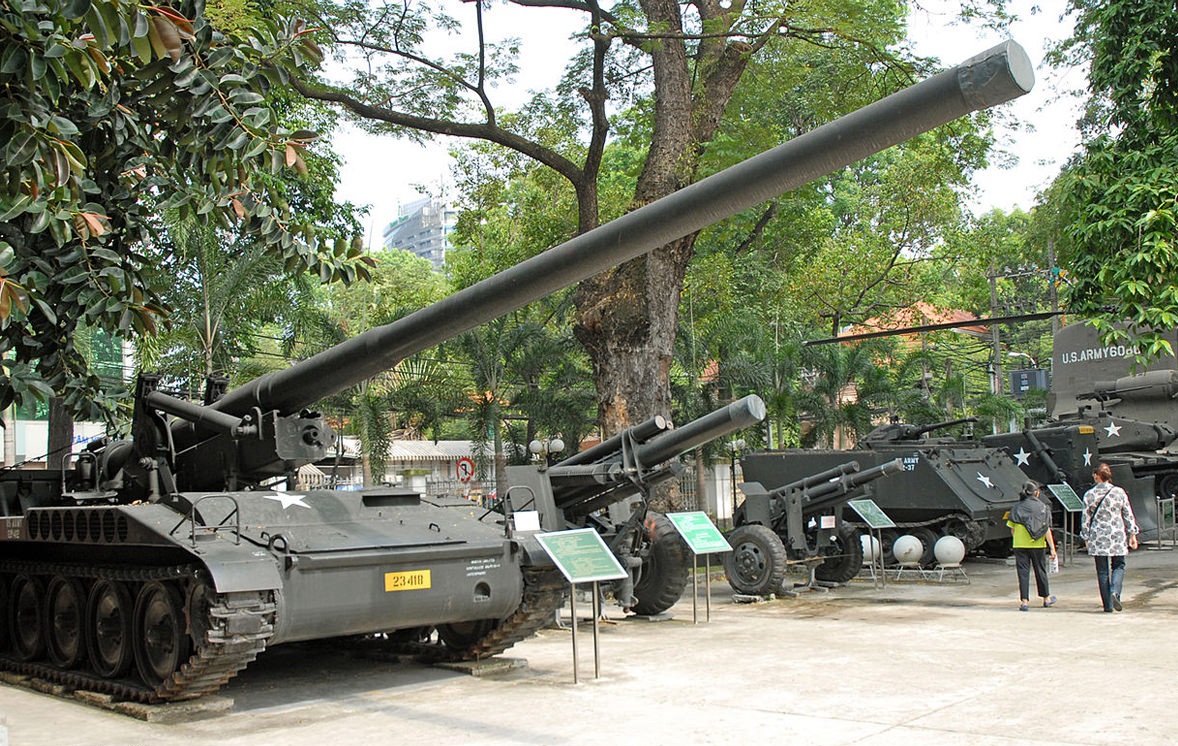 |
Started in 1973, the construction of the mausoleum was modeled on Lenin”s mausoleum in Russia and was first open to the public in 1975. T
The War Remnants Museum once known as the ‘Museum of American War Crimes’ first opened to the public in 1975.
It’s a shocking reminder of the long and brutal Vietnam War with many graphic photographs and American military equipment on display, including a helicopter with rocket launchers, a tank, a fighter plane, a single-seater attack aircraft and a 6,800kg conventional bomb.
|
All these weapons were used by America against the Vietnamese at some point during the infamous war that lasted from 1945-1975.
One of the most talked-about exhibits are the ‘tiger cages’ in which the South Vietnamese government kept their political prisoners. These small cages are only 2.7m x 1.5m x 3m each and were sometimes used to keep up to 14 prisoners in. There is also a guillotine used by the French and the South Vietnamese to execute prisoners from opposing political groups. Brought to Vietnam by the French; the guillotine was last used in 1960.
Also featured are grisly photos that show the disfigured bodies of locals who had prenatal exposure to strong pesticide and chemical sprayed, best known by the name ‘Agent Orange’. Vietnamese Ministry of Foreign Affairs believed that there were 500,000 children born with birth defects while as many as 4.8 million people were exposed to it from 1961 to 1971.
The War Remnants Museum is in District 3, Ho Chi Minh City and is run by the government. It is open all year round from 07:30 to17:00. A visit to this war museum is a disturbing experience for most people and may not be suitable for children (though they are allowed to enter).
Opening Hours: Daily from 07.30 - 12.00 and 13:30 – 17:00
Location: 28 Vo Van Tan, in District 3, Ho Chi Minh City
9. Phong Nha-Ke Bang National Park
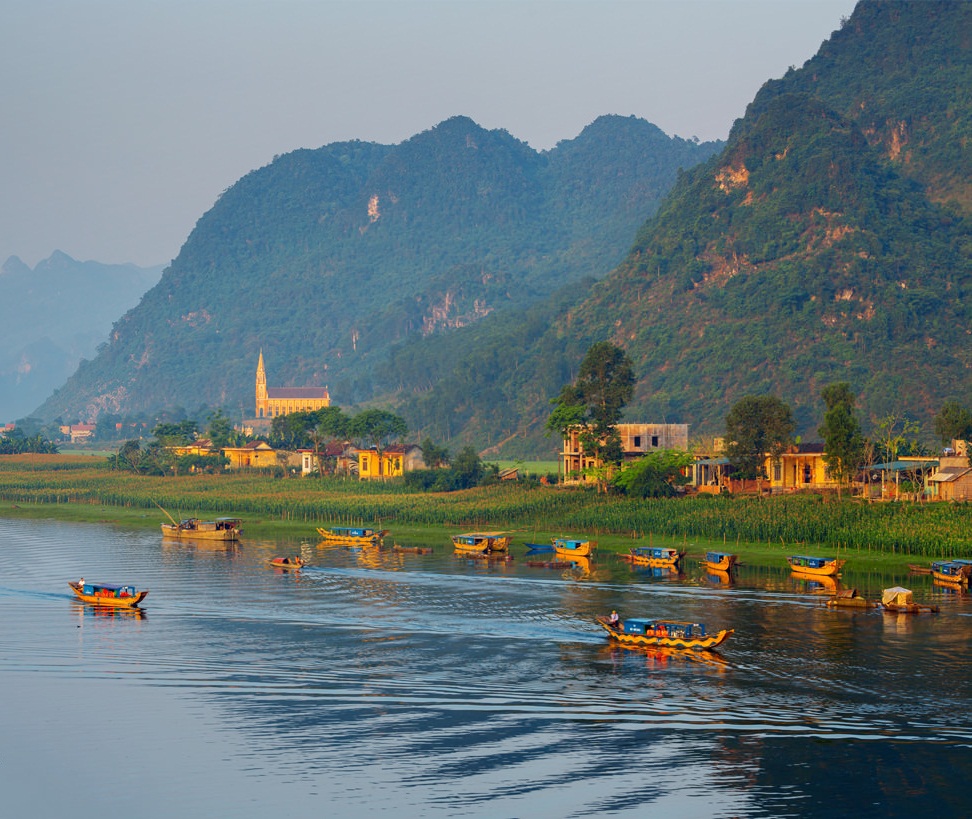 |
Phong Nha-Ke Bang is more than a National Park, it is a UNESCO World Heritage Site located in Quang Binh Province, north-central Vietnam. The result of earth crust development 464 million years ago it’s the oldest major karst formation in Asia.
Phong Nha-Ke Bang Park features a 2,000sqkm of limestone zone and an impressive grotto and cave system with a total length of 70km. The park is home to the Hang Son Doong Cave, the world”s largest cave. Its biggest chamber is over five kilometres in length.
|
Covered mostly with tropical rainforest, Phong Nha-Ke Bang Park is one of the most important eco-regions of the Indo-Pacific. It also offers many significant geomorphic features including underground rivers, dendritic caves, dry caves, suspended caves and terraced caves. Many endangered animal species still roam the area including black bears, tigers and elephants.
Composed of 300 caves and grottos, Phong Nha-Ke Bang National Park offers countless activities, amongst them visiting caves and grottos by boat as well as mountain climbing and forest trekking. The park is huge and home to various interesting flora; many of which are hardly found elsewhere. This is a fine chance to learn more about rare and unusual species.
Phong Nha-Ke Bang National Park
Opening Hours: All year round
Location: In Quang Binh Province, north-central Vietnam (about 500km south of Hanoi and 260km north of Da Nang)
10. The Sand Dunes of Mui Ne
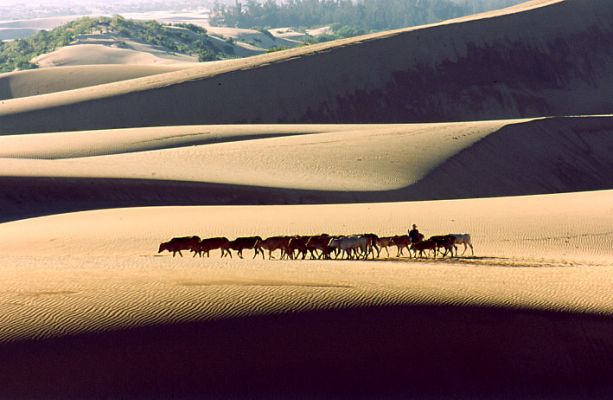 |
Many visitors enjoy a trip to these surprisingly Saharan-like sand dunes located not far from Mui Ne’s important beaches. There are the two fascinating spots to check out; the white and the red sand dunes.
The White Dunes are by far the larger dunes and are known by locals as Bau Trang or White Lake. There are quite a few small stands selling food and drinks to visitors within the area along with pine trees offering much-needed shade.
|
The Red Dunes, as the name suggests, features reddish-brown sand that makes them a more popular place for photography. Smaller than White Dunes, they are easier to reach. Sand-sledding is a common (and fun) activity here, but it is hard to nail down where the best location to do so is as the sands shift from season to season so it’s best to look around. Dry sand is much more enjoyable to sled on.
Visitors can rent plastic sleds and it is a wise idea to check the price and agree on it beforehand. Some travelers have had unpleasant experiences with the youngsters renting them out so be alert and keep cool. Another interesting activity is kite flying as well as catching the beautiful sunset here. These dunes are a popular picnic place for locals too.
Opening Hours: All year round. Best time to visit is either early in the morning or late afternoon as the sand can get very hot during the day. Take lots of water.
Location: Mui Ne in Central Vietnam

CTY TNHH DU LỊCH & THƯƠNG MẠI HẢI TUẤN
LIÊN HỆ THUÊ XE DU LỊCH - ĐẶT TOUR
|
CHĂM SÓC KHÁCH HÀNG hoặc vui lòng gửi thông tin yêu cầu dịch vụ qua email:
PHẢN ÁNH CHẤT LƯỢNG DỊCH VỤ:
093 35 65 263 Mr Tuấn - Zalo, Viber, WhatsApp, LINE
|



Xem thêm